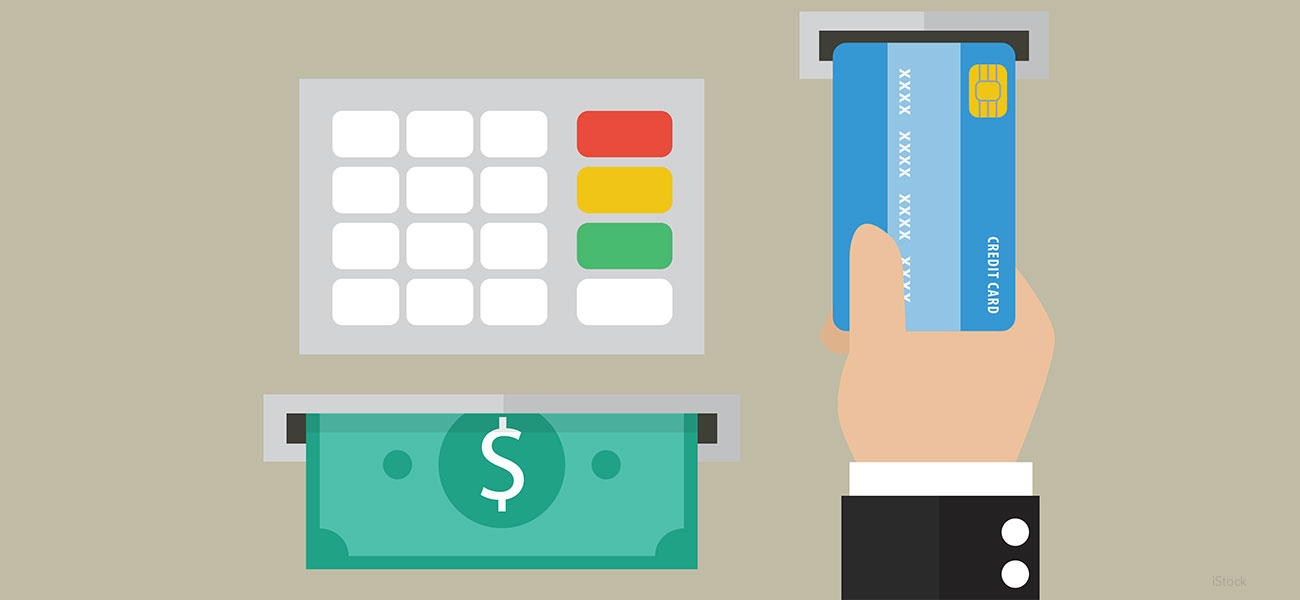
EMV takes hold at ATMs
Tuesday, February 21, 2017
View ShowroomIt’s human nature to put off difficult or time-consuming tasks, or assignments with deadlines far enough in the future you don’t need to address them right away.
For many U.S. financial institutions, EMV (Europay, MasterCard, and Visa) technology falls into that category.
Europe began its move to EMV—which uses embedded computer chips as an extra layer of security  against counterfeit fraud—as early as 2004. So card issuers and consumers had several years of experience with EMV cards before a mandated move to EMV in the U.S. got underway in 2015.
against counterfeit fraud—as early as 2004. So card issuers and consumers had several years of experience with EMV cards before a mandated move to EMV in the U.S. got underway in 2015.
Even with that foreshadowing—and with fraud liability shifts for ATMs taking place in October 2016 for MasterCard and this coming October for all other global payment networks—domestic ATM installations haven’t exactly been swift to convert.
A recent ATM Industry Association survey indicates that 58% of U.S. ATMs converted to EMV by the end of 2016, and 79% will make the switch by the close of 2017.
So, one-fifth of all units still will use older technology after the final ATM fraud liability shift. Noncompliance could prove particularly expensive for smaller ATM fleet owners.
“Any ATM operator, regardless of size, will need to re-evaluate its business model due to EMV upgrades,” says Troy Bernard, director of product and marketing at CPI Card Group, who points to polar perspectives on EMV. “On the positive side, operators must ask themselves: ‘If I’m an early adopter of EMV, can I gain share as competitors leave the market, or as international travelers use my ATM because their card issuers won’t permit magnetic stripe-only cash access?’
“On the negative side of the profit and loss equation, operators absolutely will need to factor in the cost to upgrade to EMV, and the continued growth of electronic payments negatively impacting cash payments,” adds Bernard.
Another negative is the fraud/theft liability shift from credit card companies to retailers who fail to protect themselves by converting to EMV-based point-of-sale terminals.
While credit unions have been at the forefront of installing EMV-capable ATM fleets, educating merchants and consumers about the desirability and utility of EMV—and helping them achieve a level of comfort with it—can be a difficult and drawn-out process.
The best way around this obstacle, says Bernard, is pretty straightforward. “One of the key lessons we learned from the retail liability shift is that regardless of how much effort card issuers exert to educate their customers with marketing materials, and how much merchants try to train their cashiers, the best investment is in the technology right at the point of sale,” Bernard says.
“When the clerks and the customer have clear and simple messages to follow,” he adds, “the checkout experience is intuitive and fast, and education occurs much more quickly.”
Read the full article on Credit Union Magazine.
Additional Resources from ATM Industry Association
- 4/26/2024 - Time to Take Action! Support the Crime Bill - We Need You!
- 4/23/2024 - ATMIA Unveils Strategic Collaboration with Reconnaissance International to Elevate Intelligence & Networking Services to the ATM & Currency Industries
- 4/21/2024 - Fight Against Cashless Economy:
- 4/18/2024 - 3 myths about accepting cash at self service
- 4/18/2024 - Upcoming ATMIA/ASA Committee Meetings: April and May 2024
- Show All ATM Industry Association Press Releases / Blog Posts



























